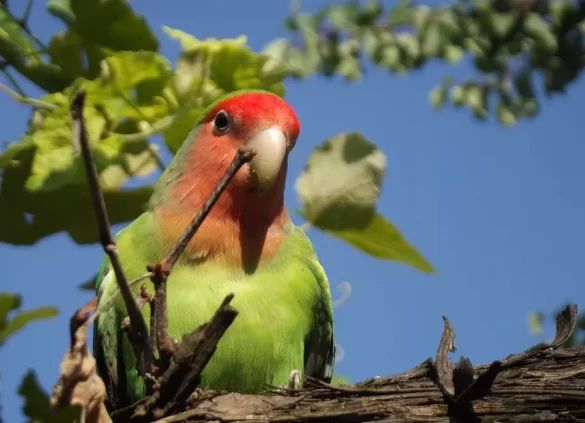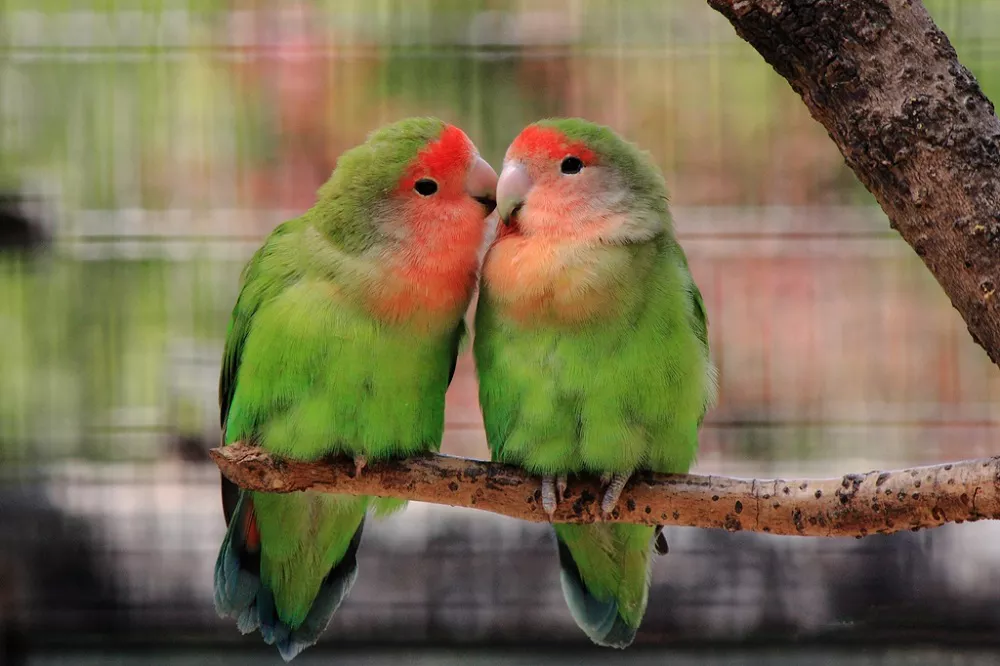Lovebirds, cherished for their affectionate nature and vibrant plumage, are popular pet birds among avian enthusiasts. Whether you’re a seasoned lovebird owner or contemplating bringing one into your home, it is essential to determine the gender of your avian companion. However, differentiating between male and female lovebirds can often be challenging without the proper knowledge and expertise. In this article, we will provide a comprehensive guide to help you identify the gender of your lovebird, empowering you to better understand and care for your feathery friend.
1. Physical Differences
One of the primary ways to distinguish between male and female lovebirds is by examining their physical characteristics. Although the differences may not be immediately obvious, a closer observation can reveal some distinct traits that set the genders apart.
Male Lovebirds: In many species of lovebirds, males typically have more vibrant and intense coloring compared to females. Their feathers often boast brighter shades, and they may exhibit a greater contrast between their body colors and the color of their head and neck. Additionally, some male lovebirds develop a small, round bald spot on the back of their heads as they mature.
Female Lovebirds: On the other hand, female lovebirds generally display more subdued and muted coloring. Their feathers tend to be less intense, and they might lack the bold contrasts that are frequently seen in males. However, it’s important to note that physical variations can vary based on the specific species of lovebird.
2. Behavioral Cues
Observing the behavior of your lovebirds can also provide valuable insights into their genders. Lovebirds, as their name suggests, are known for their strong pair bonds and affectionate interactions. However, these behaviors can manifest differently between males and females.
Male Lovebirds: Male lovebirds often exhibit more overtly aggressive behavior than females. They might be territorial and assertive, especially when it comes to defending their chosen nesting site. Additionally, male lovebirds tend to be more vocal and inclined to mimic sounds and noises.
Female Lovebirds: Female lovebirds, while still capable of aggression, tend to be more gentle and nurturing in their interactions. They might display more nesting behaviors, such as shredding paper or other materials for nesting purposes. Females are also known to exhibit a more subdued vocalization pattern compared to their male counterparts.
3. Pelvic Bone Examination
Another technique used to determine the gender of lovebirds is by examining their pelvic bones. This method requires a gentle touch and some practice, but it can yield reliable results.
Hold the lovebird gently but securely in your hand, placing your thumb on its back and your index and middle fingers on either side of its abdomen. Gently apply pressure to the area where the pelvic bones meet, just above the vent. In mature females, the pelvic bones tend to be slightly wider apart to facilitate egg-laying. In contrast, the pelvic bones of males are typically closer together.
4. Cere Characteristics
The cere, a small area located just above the beak and at the base of the nostrils, is a significant indicator of a lovebird’s gender. The color and texture of the cere can provide valuable information about the sex of your bird.
Male Lovebirds: In most species of lovebirds, males have ceres that are more brightly colored, often leaning towards shades of blue, violet, or deeper purples. As male lovebirds mature, their ceres become more vivid.
Female Lovebirds: Female lovebirds usually have ceres that are either pale blue, tan, or a lighter shade of the male’s vibrant hue. Moreover, the cere of a female lovebird can change during her reproductive cycle, becoming darker and rougher when she’s ready to lay eggs.
5. DNA Testing
For those seeking the most accurate and foolproof method of determining lovebird gender, DNA testing is a reliable option. DNA testing involves collecting a small blood sample or feather follicles from the lovebird and sending it to a specialized laboratory for analysis.
DNA testing provides a clear and definitive answer to the question of gender, eliminating any ambiguity. This method is particularly useful when dealing with lovebirds that have less distinguishable physical characteristics or when accuracy is of utmost importance, such as in breeding programs.
Conclusion
Lovebirds are captivating and charming companions that bring a splash of color and joy to any household. Distinguishing between male and female lovebirds can seem challenging at first, but with a keen eye and attention to detail, you can learn to identify their gender through a combination of physical traits, behaviors, and specialized techniques. Whether you’re a pet owner, a breeder, or an enthusiast, understanding the gender of your lovebirds can contribute to their overall well-being and your enjoyment of their company.
FAQs About the Lovebirds
Q: What are lovebirds?
A: Lovebirds are small, social and colorful parrots that are native to Africa. They are known for their affectionate behavior, hence the name “lovebirds.” These birds are often kept as pets due to their charming personalities and vibrant plumage.
Q: How big do lovebirds grow?
A: Lovebirds are relatively small parrots, typically ranging in size from 5 to 7 inches (13 to 18 cm) in length, depending on the specific species.
See Also: 9 Most Popular Lovebirds & Breeds Introduced
Q: Are lovebirds social birds?
A: Yes, lovebirds are highly social birds that thrive on companionship. They are known for forming strong bonds with their mate or a close companion, and they can become quite attached to humans if hand-raised from a young age.
See Also: Do Lovebirds Need to be in Pairs?
Q: What do lovebirds eat?
A: Lovebirds primarily eat a diet consisting of seeds, fruits, vegetables, and occasionally some protein sources like eggs. Providing a balanced diet is important for their health and longevity.
See Also: What Foods Can Lovebirds Not Eat (You Need To Know)
Q: How long do lovebirds live?
The lifespan of lovebirds can vary depending on factors such as species and care. On average, lovebirds can live anywhere from 10 to 15 years, with proper care and attention.
Q: Do male and female lovebirds behave differently during breeding season?
A: Yes, male and female lovebirds might exhibit different behaviors during breeding season. Males might become more territorial and aggressive, displaying behaviors such as head bobbing, singing, and even chasing other birds away from their chosen nesting spot. Females might engage in nest-building activities and become more protective of their nesting area. However, these behaviors can be influenced by various factors, including the birds’ age, health, and environment.



 Facebook
Facebook  Instagram
Instagram  Youtube
Youtube 